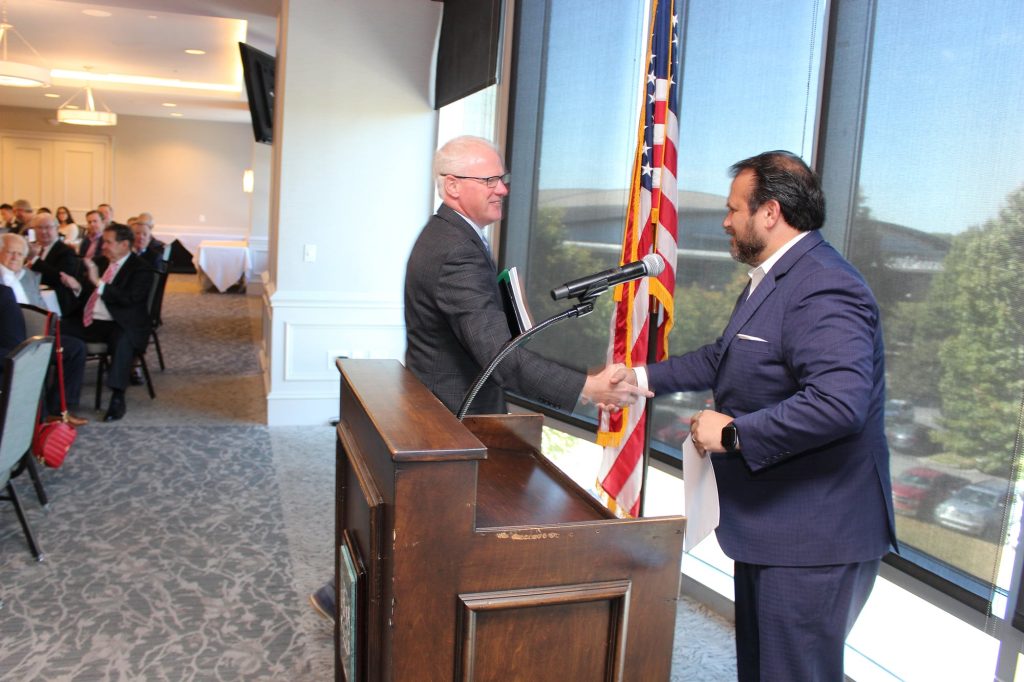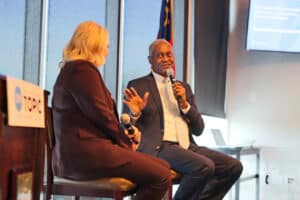“If you want to look at how to get things done, look at Gwinnett,” said Georgia Department of Transportation (DOT) Commissioner Russell McMurry in his opening remarks to the Gwinnett Chamber during its monthly On Topic luncheon presented by Rocket IT. The Commissioner praised the county, cities, and community improvement districts (CIDs) for their ongoing multi-modal achievements and great working relationship with the DOT. He also unabashedly noted the reason for this heralded success stating that “without SPLOST, Gwinnett would not be what it is today.” Gwinnett’s SPLOST (special purpose local option sales tax) has fueled the expansion and maintenance of roads, bridges, interchanges, parks, public safety services and, in short, the infrastructure essential to supporting its near-one-million citizens. But McMurry did not stop there. Recalling the age-old quote from Charles Dickens’ Tale of Two Cities, the Commissioner summed up the state of transportation as “the best of times and the worst of times.” He was not wrong.
Some of those “worst” times, he shared, are factors hitting everyone. From inflation driving up the cost of projects by around 132% over forecast, to supply chain issues disrupting DOT contractor timelines for progress and completion, transportation – just like every other industry – is feeling the pinch. Despite these challenges, however, there are some “best” case scenarios happening and even better things on the horizon. In 2021, the federal government approved its infrastructure bill that is bringing in 22% more funding to support the inflated costs that DOT is experiencing with its current projects. So, projects have not stopped and only a handful have even slowed as a result. What does this mean for Gwinnett County? It means roughly $820 million over the next several years will be invested in interchange improvements along 316 between Gwinnett and Barrow Counties. McMurry noted that this investment will remove thirteen traffic signal lights and improve roughly 7-8 intersections for safer and more efficient traffic flow along this major state corridor.
McMurry also shared vision and plans alluding to the innumerable ways technology is ever-changing the people-moving landscape. From signals conveying weather conditions and stopped traffic notifications to harmonizing speed with green lights and improving product movement, technology is literally “paving” the future of transportation. He also outlined the state’s work to obtain federal funding for DC fast charger installation along eight interstate corridors. Additional charging stations will support the projected 700,000 electric vehicles expected to be produced each year once the Rivian and Hyundai plants are fully operational in Georgia.
Transportation in Georgia continues to move forward, leveraging funding for maintenance and efficient operations and harnessing technology to improve safety and more sustainable modal options for the future.
For more information on the Georgia DOT’s programs and projects, visit majormobilityga.com, and to learn more about the Gwinnett Chamber’s next On Topic luncheon featuring Gas South President & CEO Kevin Greiner, go to www.GwinnettChamber.org/Events.





